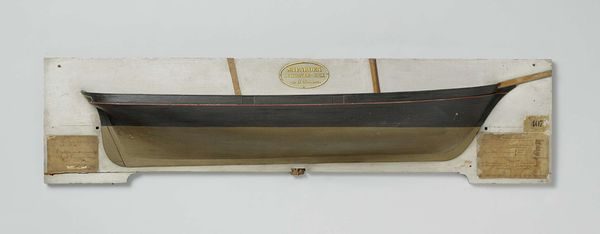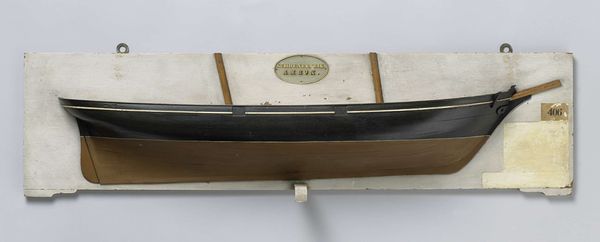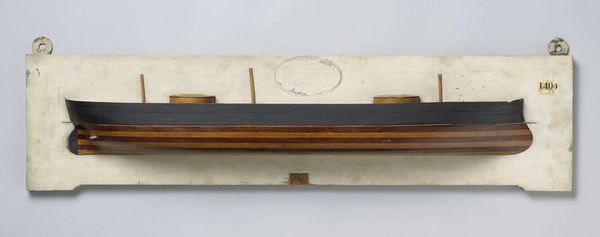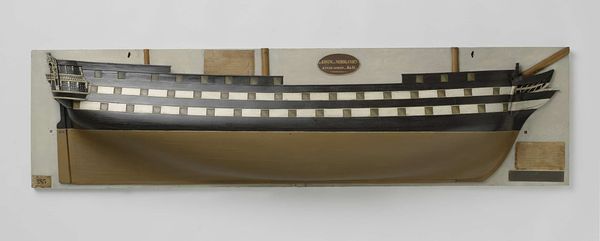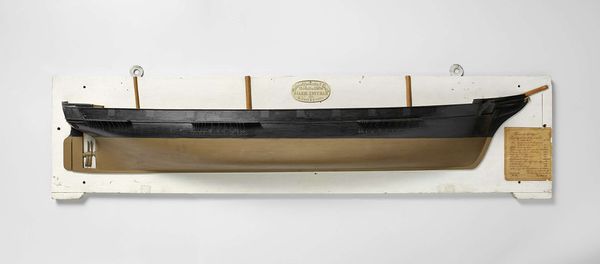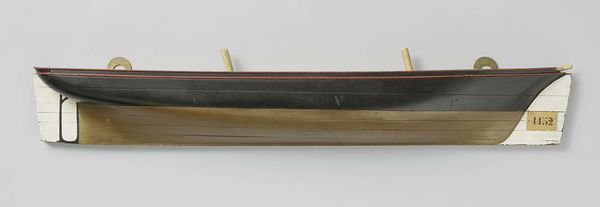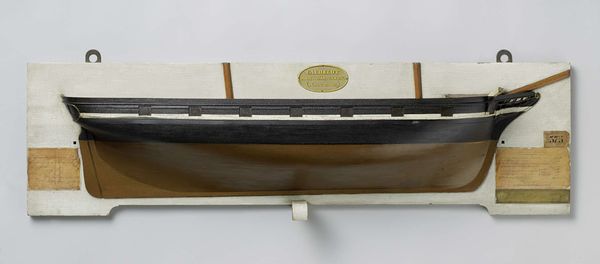
sculpture, wood
#
sculpture
#
geometric
#
sculpture
#
wood
Dimensions: height 26.8 cm, length 121.5 cm, width 12.5 cm
Copyright: Rijks Museum: Open Domain
Curator: Before us is a “Half Model of a Screw Steamer,” crafted around 1860 by Rijkswerf Vlissingen. It’s a wooden sculpture mounted on a backboard. Editor: It strikes me as starkly utilitarian, almost austere in its lines. There's a compelling contrast between the dark upper hull and the lighter lower section, a separation that's not just visually defined, but seems symbolic somehow. Curator: These half models were, in fact, indispensable tools. Shipbuilders used them to visualize and refine the hull designs. Each line represents a slightly different section of the ship; they would then take these measurements directly from the model. Consider this object, then, a critical artifact in the social and labor context of naval construction during the Industrial Revolution. Editor: Indeed, but there's also a formal elegance to the streamlined form. Note how the lines converge at the bow, the careful gradation of color that suggests the waterline and the tension between the object’s inherent flatness, being only half a ship, and its sculptural presence. Curator: Absolutely, and the materials themselves tell a story. The choice of wood, its availability, and the specific techniques used to shape it speak to the resources and skills present at the Rijkswerf Vlissingen shipyard, which was a central institution in Dutch maritime power at the time. We should examine the means of production. Editor: Yet, independent of its original purpose, the object also transcends its utility, becoming a study in form and negative space. The relationship between the model and the white painted board on which it is set is really well balanced. Curator: And one must consider the skill of the craftsman or craftsmen. Understanding of naval engineering principles alongside highly refined woodworking ability must have been necessary to execute such a detailed and precise model. This wasn't merely a practical object; it embodied a certain degree of artistic aspiration tied to craftsmanship. Editor: A perfect synthesis of art and industry, wouldn't you say? Curator: Indeed, the intersection is what matters. Reflecting on both the intention behind it and its ultimate presence offers, hopefully, an appreciation for design innovation. Editor: Agreed. Thank you. I found myself thinking differently about that relationship too.
Comments
No comments
Be the first to comment and join the conversation on the ultimate creative platform.
